Tata Steel: Poo converts CO2 to useful chemicals
- Published
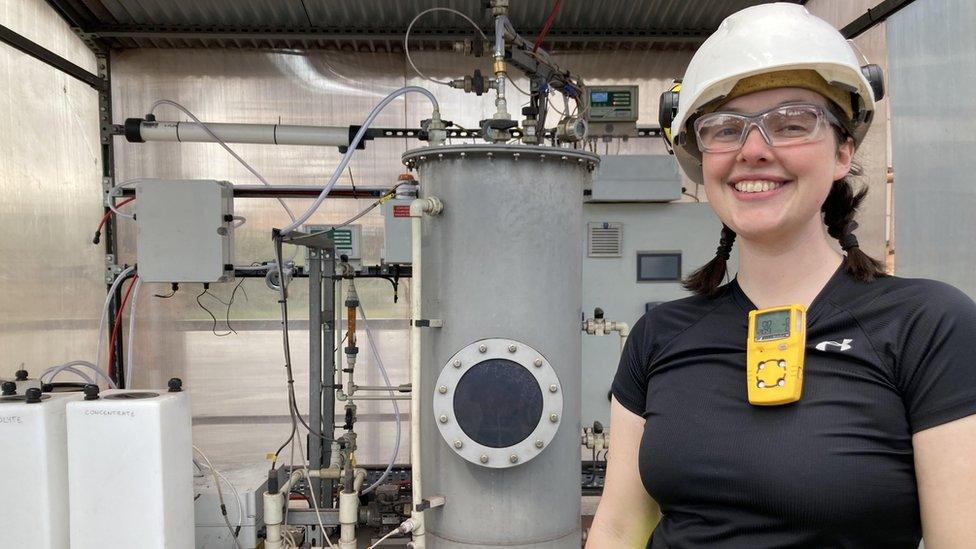
Dr Rhiannon Chalmers-Brown runs the research project at the steelworks
Carbon emissions from Tata Steel blast furnaces are being converted to chemicals in a project which could help large polluters lower their carbon footprint.
Gases from the firm's Port Talbot steelworks are mixed with tiny bacteria from sewage plant samples.
The bacteria produce acetic acid, which is used to make chemicals for different industries.
"Microbes have always been able to do it," Dr Rhiannon Chalmers-Brown said.
"We are just taking them and using them in this way," the researcher from the University of South Wales, who runs the trial project, added.
Researchers say this process could be used to get rid of the CO2 coming from the chimneys of many different industries .
Tata Steel is the biggest emitter of CO2 in the UK and has already taken steps to reduce its impact on the planet .
The CO2 that comes from the chimneys of its two blast furnaces at Port Talbot, where it makes steel for use in its steelworks across the UK, is considerable.
Dr Chalmers-Brown started researching the process in the university's labs and is now running a pilot project at the steelworks. Tata Steel is one of the funders of the research project at the University of South Wales.
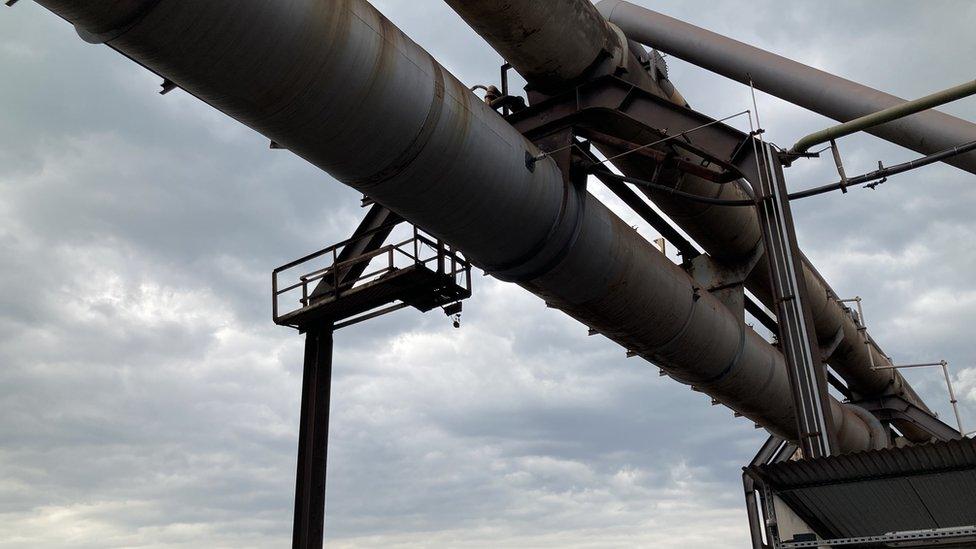
A pipe takes some of the gases from the blast furnace into pilot project's testing area
A long large pipe takes the gases produced in the blast furnace to other parts of the works, but a small pipe guides some of those gases into the testing area.
Dr Chalmers-Brown explains how the gases, CO2 and Carbon Monoxide from the blast furnace "feed" the microbes used for the project.
The climate-damaging gases are then turned into acetic acids that can be used by a wide range of manufacturers in industries from paint manufacturing to food production. They could even be used to colour coat steel at Tata's plant in Shotton, Flintshire.

The pilot project at the Port Talbot steelworks
The gases enter a metal reactor that is about 4ft (1.2 metres) tall where they are mixed with live microbes taken from "sewage sludge " or poo.
"They are little bacteria that swim around in our reactor and they eat the gases and make acetic acid for us," Dr Chalmers-Brown says.
For Tata Steel, the project is one of many ways in which it is trying to make steel production cleaner.
In addition, it is turning the CO2 it produces into a useful product, rather than releasing it into the atmosphere and causing damage.
It is a climate change solution known as "Carbon Capture and Use".
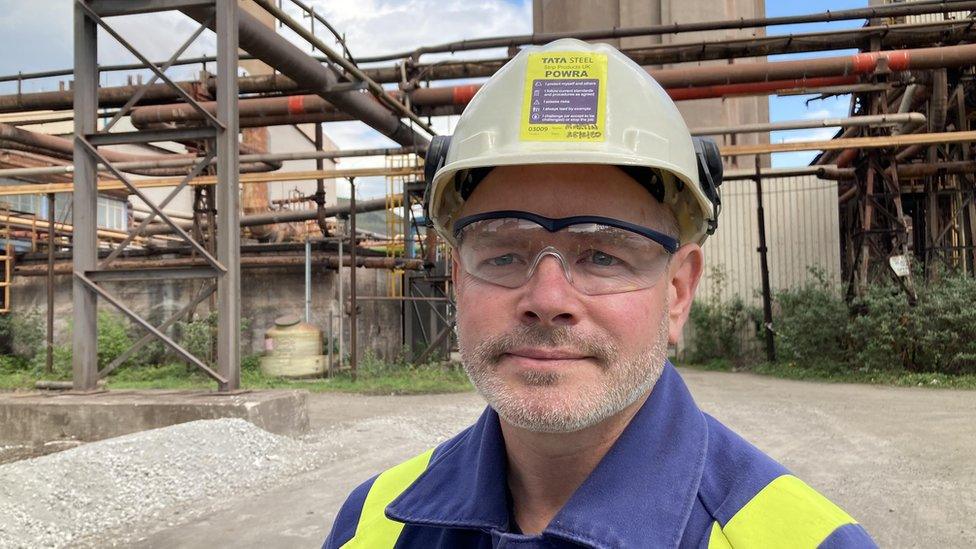
Martin Brunnock from Tata Steel says the CO2 could be used to create other products
"Ultimately we use as much gas as we can and the gas that we can't use is flared into the atmosphere," said Martin Brunnock, Tata Steel's Sustainability Spokesman said.
"This project has the potential to create value from that CO2 and that could be used to create other products."
Cutting emissions is the main incentive for funding this pilot. Tata Steel has committed to reducing the amount of CO2 it releases into the air by 30% by 2030 .
Demand for steel is expected to increase as new renewable and nuclear energy plants are built .
The blast furnaces where molten steel is made from coal and iron ore are under most scrutiny.
Tata Steel could instead use electric furnaces or turn to hydrogen as a fuel.

WILD MOUNTAINS OF SNOWDONIA: Five farming families open their gates and share their lives
BROTHERS IN DANCE: The remarkable duo at the forefront of UK dance

- Published25 October 2021
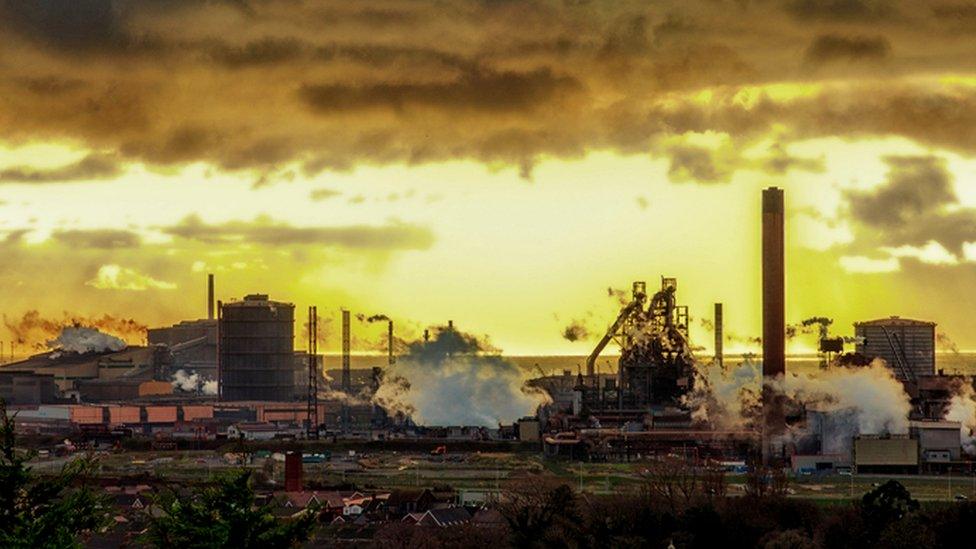
- Published18 October 2021
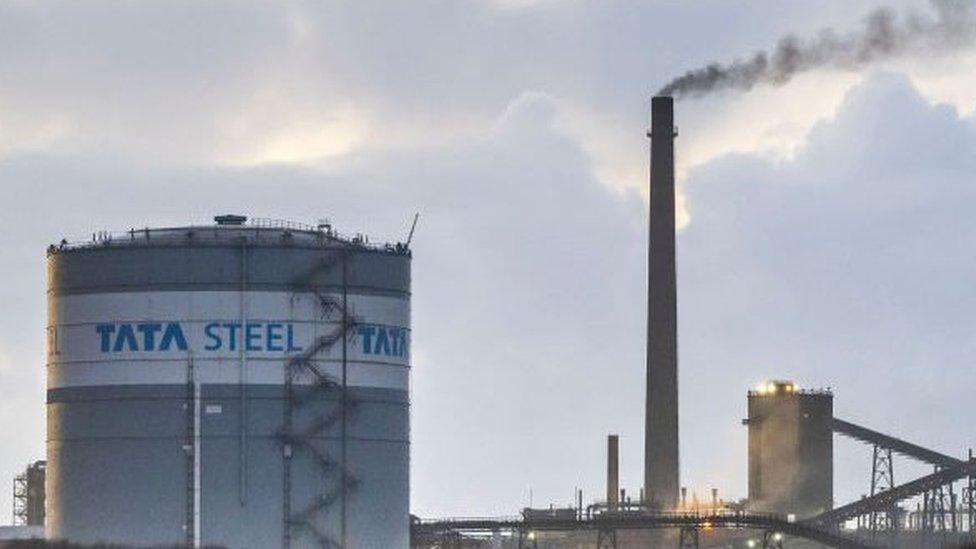
- Published28 October 2021
